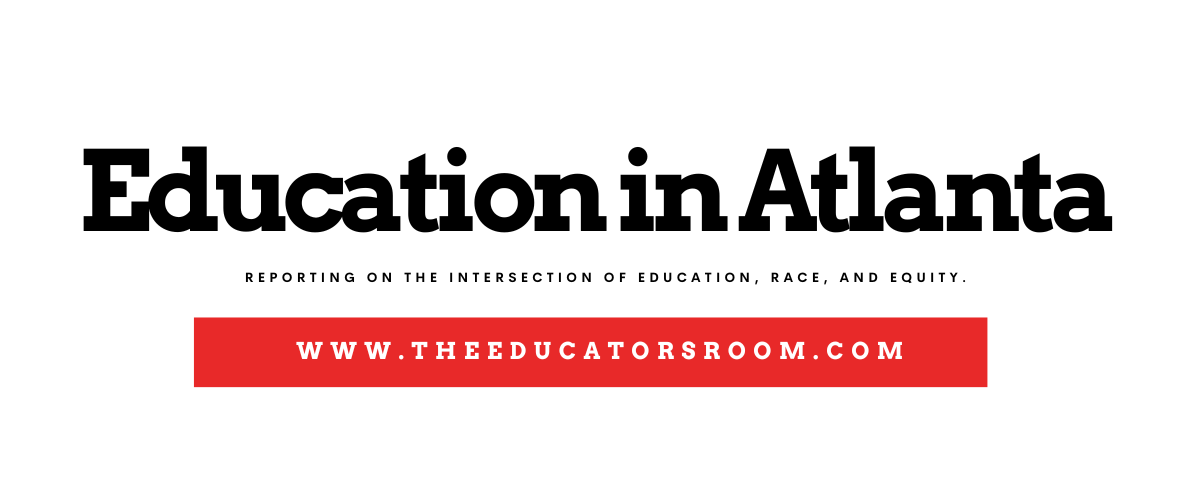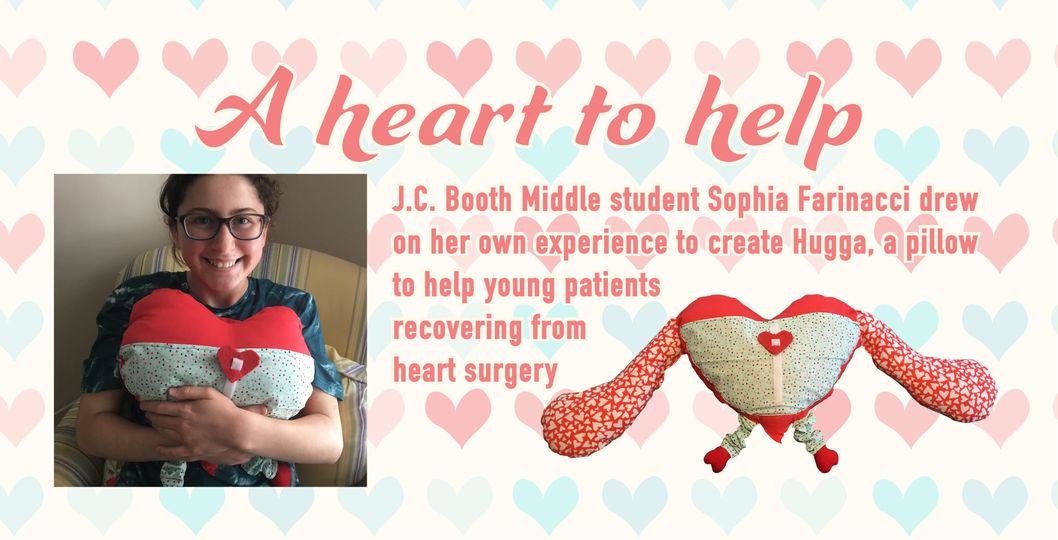Sophia Farinacci, a rising ninth-grader at McIntosh High School, was born with truncus arteriosus — a life-threatening birth defect of the heart. After two open-heart surgeries — one at a week old and the other at age 12 — she felt inclined to help others in similar situations.
Farinacci, 14, said she struggled with her recovery after her second open heart surgery — using a large sternum support pillow that blocked her vision — feeling as if no one around her truly understood what she was going through. She said it wasn’t until she spoke to another person who had gone through the same surgery that she felt supported, and later inspired to create the Hugga, a kid-friendly sternum support pillow that provides similar encouragement.
“I wanted [open heart surgery patients] to know that there’s someone out there that’s gone through what they’ve gone through, and that I care about them and I want them to be comfortable,” Farinacci said. “And although it’s hard I hope to give people encouragement.”
Sophia Farinacci
On a tag within her pillow invention, Farinacci included an encouraging message that also summarizes her story for others in similar situations.
“I hope it communicates that I understand their pain, that I know what they’ve gone through and that they’re not alone,” Farinacci said.
Farinacci said while she was inspired by her own pain and struggle, she came up with her invention as the result of a school project during the 20-21 school year — the annual invention convention for eighth-graders.
Farinacci said during her hospital stay, medical staff and her family were encouraging her to get up, walk and drink water, but moving at all caused extreme pain after her surgery.
This made her angry and upset, Farinacci said. She felt that nobody understood what she was going through until the woman who had had heart surgery sat with her.
In the hospital, Farinacci had to hug a sternum support pillow to her chest, because her sternum had been cut open for her surgery, she said.
“I had to hold a pillow to my chest in case I coughed or just like for comfort in general. The pillow was boring and huge and just not fun to hold and it blocked my vision,” Farinacci said. “So when I decided to create the Hugga, I wanted it to be a pillow that’s the perfect size for kids, so like a heart shape so that their face can kind of go in the right spot and not block their vision.”
Julie Farinacci, Sophia Farinacci’s mother, said her daughter has always been highly motivated and positive. She said she applied these traits to her invention.
“She basically taught herself how to sew to get the sewing machine going and how to sew, but also how to make her own patterns,” Julie Farinacci said. “She made three different [pillows] from her patterns and everything.”
Sophia Farinacci said she researched numerous other sternum support pillows to learn how they work. She found stuffed animals she thought would be comforting and saw a mastectomy recovery pillow that went under the arms — something she found important in her own recovery.
“I thought the heart was symbolic and cute, so it’s symbolic because they’re having heart surgery, and it’s kind of also that sort of a cute kid-friendly shape,” Sophia Farinacci said.
After creating her initial design for her project, Sophia Farinacci tweaked it through Google Surveys she sent out to heart surgery patients to glean other people’s preferences and make the design more universal, Julie Farinacci said.
More adjustments will be made as she receives more firsthand input from heart patients, Sophia Farinacci said. She hopes once the final design is decided upon, she can assemble enough volunteers and fabric donors to help her create enough to donate Huggas to hospitals in the area.
“I received a pillowcase with games and toys in it from the hospital, so it would be kind of like that — just the heart pillow instead of a pillowcase,” Sophia Farinacci said. “It’s kind of that way of distributing it.”
Her daughter’s independence and ambition continue to surprise Julie Farinacci, she said.
“I just saw [the Hugga] as her invention convention project — that was it,” Julie Farinacci said. “It’s, I think, really more about what she’s feeling in her own heart to want to pass it along and get it to kids.”

